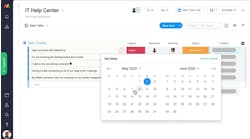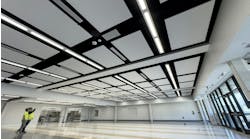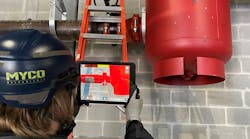Latest from Technology
Sponsored
TELFORD, PA — Myco Mechanical is a progressive mechanical contractor that employs a hands-on philosophy both on the job and in the office. A stop at Myco’s website will quickly reveal a core tenet of its business philosophy: “The Right People. The Right Results. Redefining Responsible.”
By staffing every project with highly skilled managers, mechanics, and administrative professionals, both the firm and its clients can be assured that each project will be given the utmost attention. This philosophy, along with an expert staff, ensures a high quality of work, which contributes to the success of each project.
On the Cutting Edge
Myco is always focused on providing employees and customers with the most innovative technology and services. Solutions like augmented reality help bridge the gap between virtual design and real-world construction, which promotes healthy collaboration as well as on-site safety. Libman wanted to integrate augmented reality technology into the company’s day-to-day activities and when Trimble introduced its Trimble Connect AR augmented reality app earlier this year, Libman downloaded the app and started using it immediately.
Leveraging Augmented Reality
With Trimble Connect AR, Myco Mechanical can leverage augmented reality, field-oriented construction workflows and constructible 3D models from different sources to transform daily work such as assembly and inspections. It works alongside the Trimble Connect for Mobile app that integrates with Trimble Connect, a cloud-based collaboration platform that empowers collaboration among teams involved in the design, construction, and operation of buildings.
Myco Mechanical’s project managers and superintendents now can visualize 3D BIM models in the real world to make complex situations, such as design reviews, issue resolution, and health and safety matters more intuitive and collaborative. To position the model quickly and easily in the real world, a network of QR code markers is generated in Trimble Connect and can be placed around the jobsite using either a Trimble Robotic Total Station or a manual method. Users can then accurately compare as-built construction to the digital design, which speeds up QA/QC inspections and enables immediate decision making by project stakeholders.
Visualizing the Model
Myco Mechanical used the technology on a project with a local school that has a large mechanical room. They placed a few QR codes in the room to be able to verify equipment placement and pipe location. Superintendents and project managers all have iPads in the field, so all they needed to do was download the app and begin using it. Instead of going from room to room with a drawing and verifying it, they can now upload the whole model and then determine what parts they want to see.
“The first time we rolled it out, we had a lot of success and the people in the field really liked it. It is much more engaging than looking at a 2D drawing, it makes it fun,” said Libman.
Myco Mechanical is also using it for shafts where they have a lot of duct risers or pipe in compact spaces. These spaces get crowded very quickly so using this augmented reality helps them more easily conduct field reviews.
Increased Efficiency and Accuracy
Overall, Libman has been very satisfied with his experience using augmented reality technology. It provides a quick visual of the model that makes sense to the person in the field. One of the main benefits that Myco Mechanical has experienced is the ability to review something before they get to the point of installation. This allows them to understand and visualize what they will be building and catch anything that doesn’t line up with the model to avoid costly rework later in the process.
“The whole visual aspect is my favorite feature. If we are taking a measurement off the wall and the wall in the model happens to be two inches further away than it is in the field itself, we can quickly know something happened. Based on where the QR code is, we can tell where things went wrong and avoid going back and forth to determine why it happened,” added Libman.
In the future, Libman wants to create an augmented reality station in the company’s prefab shop where they prefabricate the pipe that gets sent to the field. Using Trimble Connect AR, they will be able to precisely bring the virtual models into the shop to verify their work in 3D.




